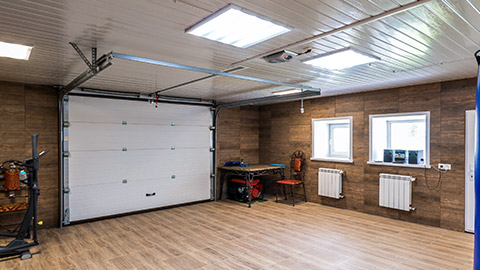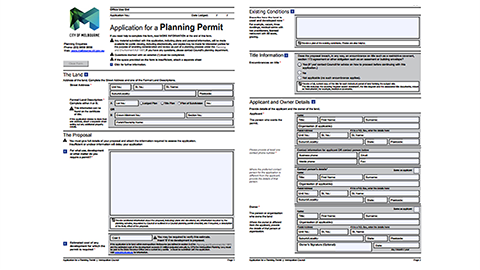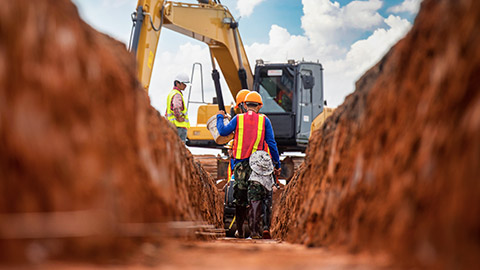A legal requirement is something that is required or a necessary condition established by law or legislation. It includes all statutes, ordinances, regulations, licenses, permits, agreements, restrictions, or other prerequisites of any regulatory and legal authority, whether federal, state, or local.
Legislation consists of Acts of Parliament and subordinate (or delegated) legislation made under Acts of Parliament. Legislation can also mean a single law (often called a statute) or a collection of laws.
All individuals covered by different types of legislation are required to comply with all that applies to them. Legislation is composed of the following:
Acts
- A sequence of provisions containing statements and rules designed to give effect to a particular policy
- An Act deals with all matters of importance for the implementation of a particular policy
Regulations
- Subordinate legislation, also known as delegated legislation, is law made by the executive branch of government with the authorisation of Parliament. Subordinate legislation includes regulations, rules, by-laws, specific policies, proclamations and notices. These laws are made under an Act of Parliament.
Thorough research of the legislation is mandatory to identify applicable legal requirements. The Australian Government, as well as States and Territory Governments, has searchable registers of legislations online. These registers are linked in the table.
| State/Territory | Registers of Legislations |
|---|---|
| Commonwealth | Federal Register of Legislation |
| Australian Capital Territory | ACT Legislation Register |
| Northern Territory | NSW Legislation |
| Queensland | Queensland Legislation |
| South Australia | South Australian Legislation |
| Tasmania | Tasmanian Legislation |
| Victoria | Victorian Legislation |
| Western Australia | Western Australian Legislation |
Use the registers to search for legislation relating to the building and construction industry and related fields of the industry, covered by the succeeding sections, to identify relevant legal requirements.
Acts and regulations relevant to building and construction
Various Acts and Regulations have been passed and enforced to govern and regulate both building and construction works. These pieces of legislation create industry standards that must be followed to assure legal compliance and the betterment of the industry, community, and the whole country. Links to the Acts and Regulations for each state and territory are provided on the following map.
Depending on where your project will take place, you should review the relevant Acts and Regulations to identify the legal requirements appropriate to your project.
Building Code of Australia
The Building Code of Australia (BCA) provides the technical requirements for designing and constructing buildings and other structures in Australia. The BCA is composed of two volumes, categorised based on the class or type of building. In turn, the type of building to be constructed dictates which volume of the National Construction Code (NCC) applies to your project. 1
With this, the BCA sets out the building and construction industry standard consistently across Australia's various states and territories. The BCA is given effect through the Acts and Regulations relevant to the building and construction, such as those found in the table above. Therefore, the BCA or its parts are considered a legal requirement under those Acts and Regulations, which needs to be met.
The BCA is part of the NCC, a uniform set of technical provisions for the design, construction, and performance of buildings and plumbing and drainage systems throughout Australia. The NCC is published and maintained by the Australian Building Codes Board, on behalf of and in collaboration with the Australian Government and each State and Territory Government.
Australian Standards

Australian Standards (AS) are published documents that set out specifications and procedures designed to ensure that a material, product, method, or service is fit for its purpose and consistently performs the way it was intended.
In the building and construction industry, Australian Standards are documents that detail building construction elements. These may include building material specifications and testing criteria and specifications. Usually, they are labelled as 'AS' number - the year of publication then the title. For example, the Australian Standard for structures made of concrete is AS 3600-2009 Concrete Structures.
Several Australian Standards are directly referenced in the Building Code of Australia as a technical standard that a building or structure must comply with. In this case, when the BCA or its parts is cited as a legal requirement or standard in legislation, the Australian Standards, in turn, will become a legal requirement as well. 2
Take note, however, that Australian Standards in themselves are not legal requirements; they are only legal requirements due to them being referenced in the Building Code of Australia. There are instances that pieces of legislation cite Australian Standards as direct legal requirements, for example, in work health and safety. However, this is not the case for building and construction legislations.
Australian Standards are available for purchase through the Standard's Store or distribution partners' websites.
At the end of the module, at Additional Resources, you can access a list of standards relevant to the building and construction industry.
Business registration and licensing
The Business Names Registration Act 2011 is the legislation outlining the rules for registering a business name. However, the use of industry and professional terms in general (not just within a business name) is also often limited by other laws.
If your proposed business name includes words that indicate you are licensed in a specific trade or profession when you do not hold such a license, you may be breaching the law.
In each state and territory, there are restrictions around using the title of 'builder' and holding yourself out to be a licensed builder. There are penalties associated with falsely claiming to be a builder when you are not licensed or registered. Each state or territory has an individual licensing authority that regulates the building profession. Therefore, you must check with them to ensure that your business name does not violate any terms under the said Act.

Building or construction contracts are generally between property owners and contractors to carry out works or supply goods and materials. The ones most commonly used in Australia are listed below:
Residential Contracts
Residential contracts are used in building dwellings. Different states have different versions of contracts regulated and outlined by their own versions of legislation surrounding the making of residential contracts, from Queensland's Building Act of 1975 to the ACT's Building Act 2004. In particular, the NSW Home Building Act 1989 outlines the minimum statutory rights of homeowners, builders, and contractors. That includes warranties, payments, deposit, insurance, and other matters relating to residential construction work.
Commercial Contracts
A commercial contract is used for building commercial establishments — typically buildings that are for non-residential purposes. That includes building office spaces, shops, hotels, and the like that require room for a private business. Sometimes, you may need to secure additional permits and other documents, depending on relevant zoning and other construction laws.
Subcontractor Agreements
A subcontractor agreement is an agreement between a company (contractor) and a service entity (subcontractor). The subcontractor provides a service for the contractor in exchange for a fee.
Lump Sum Contracts
In a lump sum contract (stipulated sum), the client and the contractor arrange and settle for the delivery of goods or services at a fixed price.
Cost Plus Contracts
A cost plus contract means the contractor is paid a fee early on in the project. The contractor is paid for preliminaries, profit, and building expenses like labour and materials (these are 'the cost'), plus an additional amount for the contractor's third-party expenses, like consultant or subcontractor costs.
Australian Building Industry Contracts
Australian Building Industry Contracts (ABIC) are contracts drafted for building projects where an architect administers the contract. Published jointly by the Master Builders Australia Limited (Master Builders) and the Australian Institute of Architects (Institute), they are designed to make contract administration clear and to cut down the chances of a dispute or time-consuming negotiation occurring.
ABIC contracts are extensively refined through field testing.
Several types of ABIC contracts are available depending on the size and nature of the construction work.
This summary describes these different contracts:
| ABIC Major Works Contract (ABIC MW 2018) | Lump sum contract for major or more complex non-housing projects with a value of $3,000,000 or more. |
| ABIC Simple Works Contract (ABIC SW 2018) | Lump sum contract for simpler non-housing projects with value between $500,000 and $3,000,000 |
| ABIC Basic Works Contract (ABIC BW 2018) | Lump sum contract for small commercial projects (up to $50,000) |
| ABIC Early Works Contracts (ABIC EW-1 2003) | Lump sum contract for projects related to site preparation (e.g. demolition, earthworks, excavation) |
| ABIC Commercial Cost Plus Contract (ABIC CP-2014 C) | A cost plus contract used by architects when there is a lack of details at the commencement of work. |
Australian Contract Law
Instead of being based on statute law (legislation created by the Parliament), the Australian contract law is based on English common law. Common law is a body of law based on court decisions and accepted customs developed primarily by Australian courts, as well as other courts adopting the common law, such as the United Kingdom.4
This short video explains how Australian Contract Law was formed and how it is applied in practice:
Australian Consumer Law
Australian Consumer Law (ACL) was enacted under the Competition and Consumer Act 2010. The ACL has a section which prohibits unfair terms in contracts, with legal consequences. This protects all parties from being exploited or taken advantage of, as well as avoiding legal consequences. Therefore, it is a legal requirement to prepare terms in the contract in a manner that is fair for all parties of the agreement under the ACL.
Australian Consumer Law (ACL) was enacted under the Competition and Consumer Act 2010. The ACL has a section which prohibits unfair terms in contracts, with legal consequences. This protects all parties from being exploited or taken advantage of, as well as avoiding legal consequences. Therefore, it is a legal requirement to prepare terms in the contract in a manner that is fair for all parties of the agreement under the ACL.

Construction Insurance consists of various insurance policies that protect building and construction projects. Generally, all types of insurance that relate to construction projects can be labelled under 'construction insurance.'
Typically, general types of insurances are covered by the Insurance Contracts Act 1984 and Insurance Contracts Regulation 2017, including building insurances in cases of damages to the structure after they are constructed, not during construction.
Workers' Compensation Insurance
Workers' compensation is a form of insurance employers in each state and territory of Australia must have to cover themselves and their employees. This kind of insurance gives protection to workers should they suffer injuries or illnesses due to their work.
Though workers' compensation schemes differ per state or territory, the scheme generally provides affected workers with weekly benefits, medical coverage and services, rehabilitation services, certain personal items, and even lump-sum payments.
Workers' compensation insurances are required by the legislation of the different states and territories of the country. Therefore it is a legal requirement that any building project must have this type of insurance. All workers (full-time, part-time, or casual workers) under the project must be covered by workers' compensation insurance.
The table below provides the relevant legislation and regulatory body for workers' compensation.
| State/Territory | Legislation | Regulatory body |
|---|---|---|
| Australian Capital Territory | Workers Compensation Act 1951 | WorkSafe ACT |
| New South Wales | Workplace Injury Management and Workers Compensation Act 1998 | State Insurance Regulatory Authority (SIRA) |
| Northern Territory | Return to Work Act 1986 | NT WorkSafe |
| Queensland | Workers' Compensation and Rehabilitation Act 2003 | Workers' Compensation Regulatory Services (QLD) |
| South Australia | Return to Work Act 2014 | ReturnToWorkSA |
| Tasmania | Workplace Injury Rehabilitation and Compensation Act 2013 | WorkSafe Tasmania |
| Victoria | Workplace Injury Rehabilitation and Compensation Act 2013 | WorkSafe Victoria |
| Western Australia | Workers' Compensation and Injury Management Act 1981 | WorkSafe WA |
Homeowners' Insurance
Residential construction projects must be covered by what is called 'homeowner's insurance' or Builders' Warranty insurance. Homeowner's insurance covers a client for loss of deposit, failure to start or finish a job, and defective work on a completed task in the event the contractor or builder died, disappeared, or become insolvent and might be unable to complete the project.
Homeowner's insurance falls under different names in different states and territories. The table shows the names of the insurance in each state and territory along with links to the legislation that makes it a legal requirement.
| State/Territory | Homeowner's Insurance | Legislation | It is a legal requirement for work valued over |
|---|---|---|---|
| Australian Capital Territory | Statutory warranties and insurance | Building Act 2004 | $12,000 |
| New South Wales | Home Building Compensation Fund | Home Building Act 1989 | $20,000 |
| Northern Territory | Residential Building Insurance | Building Act 1993 | Not applicable |
| Queensland | Home Warranty Insurance | Queensland Building Services Authority Amendment Regulation (No. 3) 2006 | $3,300 |
| South Australia | Building Indemnity Insurance | Building Work Contractors Act 1995 | $12,000 |
| Victoria | Domestic Building Insurance | Building Act 1993 – Domestic Building Insurance Ministerial Order | $16,000 |
| Western Australia | Home Indemnity Insurance | Home Building Contracts Act 1991 | $20,000 |
Other types of construction insurance
Although not explicitly covered by legislation, there are other types of construction insurances necessary for the protection of the project, its workers, and clients from unnecessary liability and compensation.
Builder's risk (Course of Construction) Insurance
This covers insurance for buildings and other similar structures while they are being constructed. These policies will usually have options that include the various types of property materials, such as building materials, foundations, temporary structures (like scaffolding), paving, fencing, outdoor fixtures, and plants, trees, lawns, and lawn fixtures that the builder installs.
General Liability Insurance
Sometimes called commercial or contractor general liability insurance, is a type of insurance that provides liability protection to businesses in case of bodily harm or property damage during the project. Whether you are the owner or the contractor, these insurance policies protect you from unnecessary risk. General liability insurance policies usually cover a broad range of damages, including faulty craftsmanship, job-related injuries, and defamation.
Commercial Auto Insurance
This is not exclusively available for construction projects, but it is insurance intended to provide auto insurance to vehicles used by the project. This insurance would help policyholders avoid high vehicle repair costs or medical expenses and lawsuits resulting from auto accidents.
Inland Marine Insurance
Primarily covers the tools and equipment that will be used by contractors and developers, including, but not limited to:
- contractor's tools, equipment, clothing, and supplies (like hammers, drills, generators, wood, drywall, etc.)
- mobile equipment (forklifts, cranes, loaders, and the like)
- leased or borrowed equipment (tools or mobile equipment)
These policies often cover these items either through replacements or covering damaged or stolen items' replacement costs.
Contractor Licence Bonds
These are agreements that guarantee that a contractor will comply with the regulations that apply to their contractor's license. Although the contractor will be the one to purchase the bond, the bonds protect the general public, the clients, and anyone conducting business with the contractor.
Each bond's cost will depend on the contractor's track record and history of income and credit score. The better your track record is, the less expensive the bond will be for you.
Construction Bonds
Construction bonds are also known as the contract bond, guarantee certain aspects of any contract or construction project, and that they will be completed if accepted.
There are several types of contract bonds, including, but not limited to:
- Bid bonds: ensure that bid proposals on projects are serious and that the bidders can financially handle the project
- Performance bond: ensure that the contractors adhere to the standards laid out and will finish the project
- Payment bonds: ensure that the contractor can provide payment to subcontractors, labourers, and suppliers
- Maintenance bonds: ensure that the project owner is protected from defective craftsmanship or materials for some time after the completion of the project
- Subdivision bonds: assurance to a city or other local municipality that the bond-holder will develop the property under their local guidelines
- Supply bonds: assure that suppliers will deliver materials, supplies, etc., as contractually specified.

Industrial Relations (IR) is the system of employment laws and rules meant to control and manage all the rights, obligations, and relationships employers and employees have in the workplace. IR is necessary in today's workplace as a harmonious relationship between the employers and the employees and is essential to maintain productivity. The success of a business often relies on treating staff well and following the legal obligations is a good starting point.
Employment and workplace arrangement
The Fair Work Act 2009 and the Fair Work Regulations 2009 is the main legislation that covers IR in Australia. It manages the employment system in the country and contains different arrangements in employing workers in various fields. The Act seeks to unify the workplace laws set and administered by most individual States and Territories to form a national workplace relation system.
The Fair Work Act established two statutory bodies that currently govern the Act:
- Fair Work Commission (FWC) – FWC is Australia's national workplace relations tribunal, meaning the Commission is the one authorised to administer the Fair Work Act provisions.
- Office of the Fair Work Ombudsman (FWO) – Their role is to provide education and enforcement of workplace laws. They also assess the complaint and breaches of workplace laws.
The Fair Work System
The Fair Work System lays out the minimum employment laws and legal requirements as stated by the Fair Work Act. Ensure that all your workers under your organisation and project are given the System's employment entitlements. Key features of the system consist of the National Employment Standard, Modern Awards, National Minimum Wage and Protection from Unfair Dismissal.
National Employment Standards: contains ten minimum employment entitlements and their regulations that should be provided to all employees. Details of the standards and who is covered by them can be found at the Fairwork website.
These include:
- Maximum weekly hours
- Requests for flexible working arrangements
- Parental leave and related entitlements
- Annual leave (Four weeks paid leave per year)
- Personal/carer's leave (Ten days paid leave per year), compassionate leave and unpaid family and domestic violence leave
- Community service leave
- Long service leave
- Public holidays (Paid day off; if asked to work, you can refuse, if reasonable to do so)
- Notice of termination and redundancy pay, and
- Fair Work Information Statement.
Modern Awards: legal documents that outline the minimum pay rates and conditions of employment per industry or field. For the construction industry, the applicable award is the Building and Construction General On-site Award 2020.
National Minimum Wage: the minimum wage that an employee can earn, depending on the award that covers the employee's occupation.
Protection from Unfair Dismissal: these cases should be brought up to FWC, as they provide guidelines for dismissals deemed harsh, unjust, or unreasonable.
The table below lists the regulatory body monitoring and regulating the Fair Work Act.
| State/Territory | Regulatory body |
|---|---|
| Commonwealth | National Employment Standards |
| Australian Capital Territory | Workplace Safety and Industrial Relations - Chief Minister, Treasury and Economic Development Directorate |
| New South Wales | Industrial Relations Commission of New South Wales |
| Northern Territory | Workplace Relations – Chamber of Commerce Northern Territory |
| Queensland | Queensland Industrial Relations Commission |
| South Australia | Industrial Relations Commission of South Australia |
| Tasmania | Tasmanian Industrial Commission |
| Victoria | Industrial Relations Victoria |
| Western Australia | Western Australian Industrial Relations Commission |
Australian Human Rights Commission Act 1986
While the Fair Work Act 2009 also covers them, the Australian Human Rights Commission Act 1986 is the prime legislation for protection against discrimination and harassment inside the workplace. This Act lists requirements of employers on how to protect their employees from being discriminated against or harassed.
Aside from that, the following pieces of legislation provide legal requirements on particular types of discrimination and harassment:
A payroll system is the process of paying employees and filing employment taxes. These were put into place to monitor and keep track of the employees' worked hours, calculate their wages, and withhold their taxes and other deductions. They are also for printing and delivering cheques or bank payments and paying government taxes on employment.
Australia employs different types of payroll software to smoothen the process. Payroll software makes things easy by only requiring minimum input from employers. Often, employers need only input wages and hours worked, and then the software would use this data to perform calculations and deduct withholdings.
Payroll in Australia
Australian businesses with combined wages above a threshold set by each state and territory must pay payroll tax and need to be aware of the Pay As You Go (PAYG) system. PAYG is an acronym used for the two different processes systemised by the Australian Tax Office (ATO) for businesses in Australia: PAYG instalments and PAYG withholding.
Businesses are legally required to pay income tax in instalments once the income from a business and investments reaches a certain amount. These payments are usually quarterly, and these instalments help avoid a large tax bill after tax return lodgement.
PAYG instalments, however, are different from a system called PAYG withholding. When employees are paid, tax is withheld and sent to the Australian Taxation Office (ATO). This process is the pay as you go (PAYG) withholding. It is a system for withholding amounts from payments to ensure end-of-year tax liabilities can be met.
Taxable Payments Annual Report
If a business makes payments to contractors or subcontractors, lodgement of a Taxable Payments Annual Report (TPAR) may also be required. This report must be lodged by 28 August each year. This report provides information to the ATO to find any dishonest operators not meeting their tax obligations. In other words, TPAR reports can help the ATO identify if a contractor:
- hasn’t included all their income on their tax return
- failed to lodge tax returns/activity statements
- quoted an incorrect ABN on their invoices, or
- failed to register for GST when they’re required to do so.
As TPAR is an industry-specific document, not all businesses need to be concerned. Generally, it applies to businesses providing the following services:
- Building and construction services
- Road freight services
- Cleaning services
- Information technology (IT) services
- Mixed services
- Security, investigation, or surveillance services
- Courier services
Depending on the services provided, businesses may need to report the company’s taxable payments. Reporting requirements vary depending on the specific industry, but generally, a taxable payments report will be required if the following statements apply to the business:
- Have an Australian Business Number (ABN)
- Made payments to contractors for services that they’ve completed on the company's behalf.
It is important to note that not all payments need to be reported. Payments that don’t need to include on taxable payments annual report include:
- Payment for materials only
- Payments within consolidated groups
- PAYG withholding payments
- Contractors who don’t provide an ABN
- Payments for private and domestic projects
- Incidental labour
- Invoices that are unpaid as of 30 June.
What details need to be included in a TPAR report?
When putting together a taxable payments report, all the payments made for the financial year must be included. The following payee details need to be included:
- ABN (where known)
- Address
- Name (business name/individual’s name)
- Total amounts for gross amount paid, total GST paid, total tax withheld when ABN wasn’t quoted.
More information can be found at the ATO's website, under Building and Construction Services - TPAR.
Single Touch Payroll
The Australian payroll system added the Single Touch Payroll (STP) to better inform the ATO of payments made to individuals. Most businesses are required to use STP to report their payroll.
The goal of the STP is to improve the ability of the ATO to monitor Australian businesses and their payroll systems. It helps the ATO enhance tax reporting efficiency and helps them find out which of the businesses under their purview is paying their employees correctly and which are not.
Australian Taxation Office
The primary revenue collection agency of the Australian Government is called the Australian Taxation Office (ATO). The ATO is responsible for managing many taxation and superannuation support and funding systems for all Australians.
The ATO has many responsibilities, including:
- collecting revenue through tax and other business initiative
- administering and collecting the Goods and Services Tax (GST)
- administering programs that provide transfers and benefits to the community
- managing the significant aspects of the superannuation system of Australia
- being the custodians of the ABR (Australian Business Registry).
New Tax System (Goods and Services Tax) Act 1999
The New Tax System (Goods and Services Tax) Act 1999 provides the administrative framework for the goods and services tax (GST) law. In it are four aspects of taxation that the Act primarily covers:
- registration thresholds
- tax invoice thresholds
- payment of GST
- rules concerning certain GST-free supplies, GST grouping, financial supplies.
Financial transaction
The legislation for the general financial transaction is covered by the Financial Transaction Reports Act 1988 and Financial Transaction Reports Regulations 2019. As the payroll system is a type of financial transaction, the project's payroll systems should comply with the legal requirements stated in these Acts and Regulations. In financial transactions, such as issuing invoices, the ABN must be clearly printed or appear in transaction documents.
There are ten labels for building classifications, from Classes 1-10, covering the Building Code of Australia. Some of these classifications, like Class 1, have sub-classifications, referred to by a letter after the number (e.g. Class 1a). Building Classes 2 to 9 are covered mainly by Volume One of the NCC, while Class 1 and 10 are covered by Volume Two. Volume Three, the Plumbing Code of Australia, refers to all building classifications. Copies of these codes and amendments can be accessed at the NCC website upon free registration.
A building, or part of it, may have more than one use and can be assigned more than one classification. Should a building have areas with different purposes, each of these must be classified separately.
Class 1 Buildings

Class 1 refers to single standalone dwellings of a domestic or residential nature — in other words, a house.
They can come in many forms and can even be horizontally attached to other houses or Class 1 Buildings, like townhouses or row houses. Attached homes are separated by walls that must be fire-resistant and sound insulating.
Class 1 Buildings have two sub-classifications:
- Class 1a Buildings are often single dwellings, a detached house, or one of a group of attached homes like a townhouse, row house, etc.
- Class 1b Buildings are boarding houses, guest houses, and the like. They are dwellings with a floor area less than 300 m2 and usually host about 12 or fewer people. 1b Buildings can also be short-term accommodations — the kind that has four or more single dwellings located on one allotment.
Class 1 buildings cannot be built above or below any class of building other than private garages.
Class 2 Buildings

They are apartment buildings, typically multi-unit residential buildings where people can live above, beside, and below each other. The NCC considers the apartments in Class 2 Buildings as sole-occupancy units (SOU).
Some Class 2 buildings come in the form of single-storey attached dwellings with a shared space below. An example of this is a building with two houses over a car park.
Class 3 Buildings

They are residential buildings other than a Class 1 or Class 2 building, often a dwelling that provides long term or transient living for several individuals unrelated to each other. Class 3 buildings can include a boarding house, guest house, hostel, or other living areas more extensive than the limits for Class 1b buildings. Examples of these include the residential areas of hotels and motels, boarding houses of schools, living areas in hospitals and jails.
Class 4 (Part of a Building)

Instead of a whole building, Class 4 refers to only part of a building. More specifically, it is a living space or residence within non-residential buildings, like a caretaker's residence in a storage facility. Class 4s are parts of Class 5-9 buildings.
Class 4s cannot be in Class 1-3 buildings, and there can only be one Class 4 part in any building (of Classes 5-9). If the living area or residence is the only one in the building, it is considered a Class 4 part.
Class 5 Buildings

These are office buildings used for professional or commercial purposes (that are not Classes 6-9 types of buildings). Class 5 buildings can include offices for lawyers, accountants, architects, general medical practitioners, and the like.
Class 5 buildings include offices for general medical practitioners. However, should the office administer medical treatments that leave patients unconscious or non-ambulatory, then the structure is then considered a health-care building — a Class 9a building.
Class 6 Buildings

These buildings are typically shops or restaurants, and cafés. They are places that deal in the sale of retail goods or services to the public. Examples of these buildings include:
- Dining rooms, bars, shops, and kiosks of hotels, malls, or motels
- Salons or barbershops
- Laundry shops
- Markets and showrooms
- Shopping centres
Class 7 Buildings

Class 7 buildings have two sub-classifications. Class 7a buildings are car parks, and Class 7b buildings are warehouses, storage buildings, or buildings that display goods (or produce) for wholesale.
Class 8 Buildings

Class 8 Buildings are usually factories. They are buildings where processes are carried out with the intent to trade, sell, or gain from them. Class 8 buildings are also used for the production, assembling, altering, repairing, finishing, packing, and the like of various types of goods, produce, and other similar items.
Class 8 buildings also include mechanic's workshops and food manufacturing buildings like abattoirs, and even laboratories (as they have a high potential for a fire hazard).
Class 9 Buildings

These are public buildings and include three sub-classifications:
- Class 9a buildings: are healthcare buildings (hospitals, clinics, and other similar places) where occupants (patients) are undergoing any type of medical treatment and may need assistance in emergencies. Laboratories in health-care buildings are Class 9a structures, even though they are usually Class 8.
- Class 9b buildings: buildings where people may gather or assemble for social, political, entertainment, religious, or civil purposes, like schools, nightclubs, assembly halls, and sporting facilities.
- Class 9c buildings: are aged-care buildings or other residential accommodations for the elderly with varying degrees of incapacity due to aging. In these facilities, they are provided with 24/7 personal care services and staff assistance.
Class 10 Buildings

Buildings and structures under this class are non-habitable and fall under three sub-classifications:
- Class 10a buildings are buildings like sheds, private garages, and carports.
- Class 10b are structures like fences, masts, antennas, walls, and pools.
- Class 10c buildings are private bushfire shelters.

Now that you are familiar with the different building classes, you should now check for limitations of your builder's registration and licences. Appropriate registration and licences are required for construction work on some building classes. This ensures that the builder has adequate knowledge, skills, and experience when conducting building works.
For instance, this is an example of a NSW Contractor Licence:

Note, a contractor licence is issued for one or three years. You are allowed to do only the types of work described on your licence.
The specific licences and registrations for building classes vary between states and territories of Australia. The map below provides links for the registration and licensing information for each state/territory.
You must check the correct licences and registration needed in the vicinity of your project to legally carry out work in the area for a specific building class.
Building approvals and permits are used interchangeably in the construction industry. They are required before construction work begins, primarily domestic building works. Both serve the purpose of ensuring that the construction work:
- Complies with building laws and legislation, including the BCA
- Will be safe and structurally sound, and
- Will provide the required levels of fire resistance, amenity, energy efficiency, and if required, access for people with disabilities.
Construction activity conditions
Obtaining a building approval or permit does not mean you can carry out any building work however you want. Building approvals and permits serve to regulate the proper and appropriate construction work of a project. To do this, building approvals and permits contain certain conditions, such as restriction and limitation. Again, these conditions differ per state, territory, and local area.
These conditions are discussed further below:
-
Obtaining a building approval or permit
To obtain a building approval or permit for your project, you need to apply for one from the local government and a licensed building certifier. Building approvals require several documents to be submitted and assessed, such as an application form, building plans and specifications (whether architectural, engineering or both), contract with the builder (if applicable), development approvals, and other relevant documents that may be requested. A 'Planning Permit', for example, is a legal document that gives permission for the specific use or development of land which may be required by the local council. If a particular project requires a planning permit, this becomes a requisite for the issuance of the building permit although they both can be applied for simultaneously.
Below is a sample application form for a planning permit:

Some projects may not require a planning permit but still necessitate a 'Building permit'. In order to know whether the project you are planning will need a planning permit, you may get in touch with your local council’s Town Planning Office.
At the end of the module, at the Additional Resources, you can access a sample building permit application, published by the Government of Western Australia.
-
Work requiring building approval or permit
Building works are mostly restricted as they require building approvals or permits to be able to perform them. Usually, construction, demolition and major alteration of a building needs a building approval and permit to carry them out. As always, the restrictions and conditions for building work requiring approval or a permit will depend on the local authority and regulation. For example, the Northern Territory Government specifies the different works that require a building permit on their website. According to this, building a new house, including a unit, townhouse or apartment, relocating an existing house to a new location or renovating a bathroom in a house where changing walls, fixtures or plumbing requires a building permit.
On the other hand, there are building works that do not require building approval or permit. These works usually are small-scale projects, such as the installation of fences and small retaining walls. Other exceptions require you not to affect specific parts of a building, such as a firewall.
-
Commencement and completion
Some statutory authorities, like the Victorian Building Authority, specify when a building work should be commenced and completed once a building approval has been issued for your project. If construction work has not begun or completed by the set time of the authorities, the building approval or permit will lapse or will not be valid anymore, and you need to obtain a new building permit to be able to carry out further building work.
-
Mandatory inspections
Some building approvals and permits require inspections to be conducted to survey the work progress and check compliance with the building code and local building standards. The frequency and duration of the inspections will again depend on local regulations where the project is. The inspections are conducted by a building certifier or a building surveyor.
To identify any restriction, limitations and any other conditions from building approvals and permits, you need to research building approvals and permits per state and territory, as specific conditions and regulations for building work will vary between them. In doing so, you will be sure that your project will carry out building work appropriately based on your building approval or permit you have obtained.The map below provides a link to the state's respective statutory body for building approvals.
Licences are permits granted by authorities to be able to perform construction work. These make sure that specific, usually complex, work functions are handled by competent and experienced people. Subcontractors, site supervisors, and site managers all require licensing to carry out their duties in a building project. To obtain these licenses, they should meet the requirements and competencies of the licenses as dictated by the authorities or regulatory bodies.
Licensing requirements differ depending on the license you are obtaining. Each state or territory in Australia also has specific requirements for how to obtain such licenses. Therefore, you must take the time to check the requirements for licenses.
Use Australian Business Licence and Information Service
The Australian Business License and Information Service (ABLIS) is a free online service provided by the National, State, and Territory Governments of Australia as a tool to help you know and comply with legal requirements. ABLIS allows you to access and obtain detailed information on the requirements and other resources of any business or industry per state, territory, or the country as a whole.
Contact relevant regulatory bodies
Although you can use ABLIS to determine licensing requirements, it is still recommended you contact the relevant statutory and regulatory bodies to check for the updated requirements for specific licenses. ABLIS should not be wholly relied upon, especially when new or revised legislation is available. Therefore, you still need to contact building and construction authorities and regulators.
The table below provides the relevant building and construction authorities you can check with or contact to confirm the applicable licensing requirements. The links can be explored to determine what type of work each licence allows.
| State/Territory | Authority or regulatory body |
|---|---|
| Australian Capital Territory | Build, buy or renovate Requirements and Responsibilities |
| New South Wales | NSW Fair Trading |
| Northern Territory | Northern Territory Building Practitioners Board |
| Queensland | Queensland Building and Construction Commission |
| South Australia | Government of South Australia Consumer and Business Services |
| Tasmania | Consumer, Building and Occupational Services |
| Victoria | Victorian Building Authority |
| Western Australia | Western Australia Building and Energy Division |

The table below lists the local representative for environmental protection with links to their website. Also in the table is the relevant legislation concerning local environmental protection and conservation.
| State/Territory | Local Environmental Legislation | Regulatory Body |
|---|---|---|
| Australian Capital Territory | ||
| New South Wales | ||
| Northern Territory | ||
| Queensland | ||
| South Australia | ||
| Tasmania | ||
| Victoria | ||
| Western Australia |
Environmental requirements
When planning the building and construction work for the project, one of the legal requirements is to conduct an environmental impact assessment (EIA). An EIA helps identify and recognise the impact of a development, such as a building and construction project, on the environment. In turn, the EIA will be a key indicator if a project should proceed or not.
The environment impact assessment is legally required under the Commonwealth Environment Protection and Biodiversity Conservation Act and local environmental legislation such as those in the table below.
| State/Territory | Authority or Regulatory Body |
|---|---|
| Commonwealth | Environment Protection and Biodiversity Conservation Act 1999 |
| Australian Capital Territory | Planning and Development Act 2007 (ACT) |
| New South Wales | Environment Planning and Assessment ACT 1979 (NSW) |
| Northern Territory | Environment Protection Act 2019 (NT) |
| Queensland | Environmental Protection Act 1994 (QLD) |
| South Australia | Development Act 1993 (SA) |
| Tasmania | Tasmanian Environmental Management and Pollution Control Act 1994 |
| Victoria | Environment Effects Act 1978 (VIC) |
| Western Australia | Environment Protection Act 1986 (WA) |
To gain an understanding of the process and requirements for submitting an environmental impact assessment, you should contact the state's or territory's respective Environmental Protection Authority.
Sustainability requirements
The National Australian Built Environment Rating System (NABERS) provides the sustainability rating for commercial buildings. NABERS rates buildings from one star to six starts, ranging from poor performance to market leading, respectively.
Once a building is constructed, it can be assessed and rated for its sustainability and efficiency for the following aspects:
NABERS ratings are valid only for 12 months, requiring an assessment and new rating every year. This helps make sure that the ratings reflect the current sustainability and operational performance of the building.
The Nationwide House Energy Rating Scheme (NatHERS) is a similar scheme for residential buildings to determine the energy efficiency of a house based on its construction and design.
States and territories generally refer to national schemes and building codes. NSW has an additional building rating scheme legislating an efficiency rating called the BASIX index. Most states and territories have financial incentive schemes to promote the construction of, and conversion to, greater energy efficiency in buildings.5
| State/Territory | Building Rating Information |
|---|---|
| Commonwealth | |
| New South Wales |
Waste management requirements
The primary legislation for waste management across Australia is the 2018 National Waste Policy: Less waste, more resources. The National Waste Policy provides a framework for collective action on proper waste management and resource recovery by businesses, governments, communities, and individuals until 2030.
The policy identifies five overarching principles underpinning waste management in a circular economy. These include:
- Avoid waste
- Improve resource recovery
- Increase the use of recycled material and build demand and markets for recycled products
- Better manage material flows to benefit human health, the environment, and the economy
- Improve information to support innovation, guide investment and enable informed consumer decision
Apart from the primary environmental legislation mentioned previously, the table below provides some examples from the Department of Agriculture, Water and the Environment website of relevant waste management and resource recovery legislation and strategies for each of them.
| State/Territory | Legislation | Strategy |
|---|---|---|
| Australian Capital Territory | ||
| New South Wales | ||
| Northern Territory | ||
| Queensland | ||
| South Australia | ||
| Tasmania | N/A | |
| Victoria | ||
| Western Australia |
Work Health and Safety (WHS) legislation, or in some states: Occupational Health and Safety (OHS), covers all the WHS acts and regulations enacted by the States and Territories of Australia. The WHS Legislation comprises the Work Health and Safety Act 2011 and the Work Health and Safety Regulations 2011, and the Codes of Practice created under the Act and Regulation.
Work Health and Safety Act 2011 (WHS Act)
The WHS Act defines the broad policies regarding health and safety standards that should be apparent in the workplace, promoting the employees' welfare, health, and safety. The 2011 Act aims to harmonise the jurisdictional WHS laws so that work health and safety is nationally consistent between the States and Territories, as they enact and enforce them under their jurisdiction.
Work Health and Safety Regulation 2011 (WHS Regulations)
The WHS Regulation 2011 is a set of regulatory guidelines stemming from the WHS Act 2011. The regulation sets out specific requirements to be met with regards to a wide range of matters relating to work health and safety.
This short video explains WHS legislation relevant to the building and construction industry:
Model WHS law
The WHS Act was created to harmonise the WHS laws, making WHS law consistent between the States and Territories. This is because the States and Territories are the ones who enforce their WHS legislation under their jurisdiction.
To create a nationally uniform WHS law, Safe Work Australia (the statutory body that develops national WHS policy) has developed a single set of model WHS laws as a legislative framework that is implemented across Australia and the States and Territories. 6
The model WHS law framework for each state and territory includes:
- Model WHS Act – outlines your broad responsibilities.
- Model WHS Regulations – set out specific requirements for particular hazards and risks, such as noise, machinery, and manual handling.
- Model Codes of Practice – provide practical information on how you can meet the requirements in the Act and Regulations.
- WHS Regulating Agency (Regulator) – administers WHS laws, inspects workplaces, provides advice, and enforces the laws.
To help you identify the current WHS framework in your workplace, the table below lists the Acts, Regulations and Construction Work Codes of Practice for each state and territory of Australia.
| State/ Territory | WHS | Codes of Practice | |||
|---|---|---|---|---|---|
| Acts | Regulations | Regulator | |||
|
Australian Capital Territory |
|||||
|
New South Wales |
|||||
|
Northern Territory |
Work Health and Safety (National Uniform Legislation) Act 2011 (NT) |
Work Health and Safety (National Uniform Legislation) Regulations 2011 (NT) |
|||
|
Queensland |
|||||
|
South Australia |
|||||
|
Tasmania |
|||||
|
Victoria |
|||||
|
Western Australia |
|||||
|
Commonwealth |
|||||

Codes of Practice
Codes of practice are not legislation but rather practical guidance material discussing how to comply with legal duties under the WHS legislation7. They address particular issues and might not cover all the hazards or risks that may arise, compared to regulations that tend to be more formal as they are legal documents.
Codes of practice come with different copies, discussing various aspects of the general workplace and workplace safety and the criteria and procedures to be followed to achieve the standard set forth by the WHS Act and Regulation.
The Construction Work Codes of Practice, in particular, lay out the general standard for the work health and safety in the building and construction work.
As an overview, the Construction Work Code of Practice discusses requirements on:
- Specific duties related to construction work
- The risk management process
- Safe work method statement
- WHS management plan for construction projects
- Information, training, instruction, and supervision
- General workplace management arrangement.
You can find all Model Codes of Practice on SafeWork Australia’s website.
Aside from the Code of Practice for Construction Work, you should read alongside it other codes on specific hazards, risks, and control measures like the following:
For more examples of Code of Practices for construction work, visit the Additional Resources at the end of the module.

